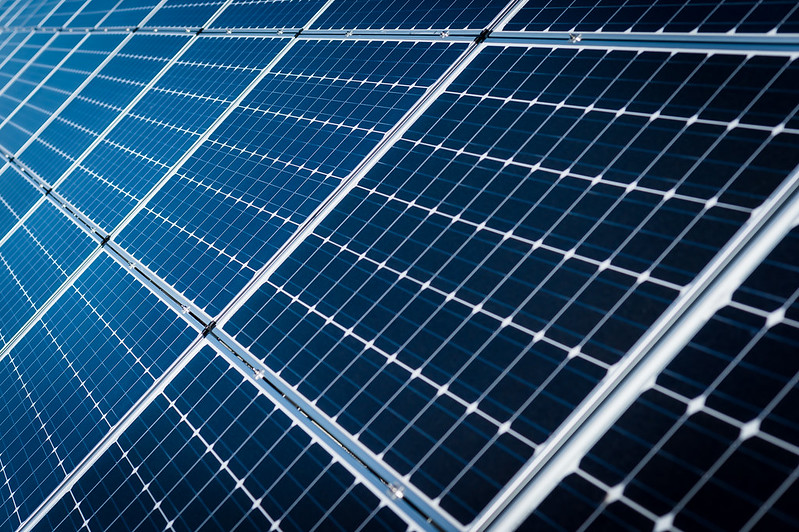Fortunately, all signs point to a relatively quick recovery. Many more states are committing to ambitious clean energy targets with additional demand coming from corporate renewable energy buyers. The Bipartisan Infrastructure Law and the Inflation Reduction Act are expected to get clean energy deployment back on track but grid connection bottlenecks mean projects are costlier and can require years to take shape.

Image: Ampt
For many project owners, repowering, not building, will make the most sense, to increase production capacity, since it uses existing land, grid connection points, and other infrastructure. Repowering helps maximize project return-on-investment (ROI), which can help make up for losses during the recent slowdown. Many of the country’s solar projects are almost 10 years old – 8 GW of assets will offer repowering opportunities in the year ahead.
Planning repowering
Identifying the optimal time to repower begins with a smart asset management strategy that addresses predictable and unexpected performance issues as well as opportunities to maximize system returns. Changing market dynamics and emerging applications can make updating PV plants with new technology a profitable decision.
To successfully plan for maximum return on a repowering investment, asset managers should understand the key technical challenges and commercial benefits of repowering activity, as well as the most well-suited technology.
Inverter replacement
With inverters having a five-year to 10-year lifespan, replacement can become cumbersome as manufacturers quickly move on to products for higher system voltages. Instead of defaulting to legacy inverters which may not be available, are less efficient, lack modern technology, and cost more per Watt than newer products; system owners can use a low-cost adapter so newer inverters added to the existing system can be used at full rated power.
Voltage sag
Voltage sag is generally caused by a faulty aspect of a project, such as accelerated module degradation, and results in the DC bus voltage performing below the inverter’s required level to produce AC output at full power. Addressing voltage sag-related issues can be a catch-22: it’s expensive to find matching replacement parts and labor-intensive to replace them, but if nothing is done, system owners lose revenue from reduced energy production. Plus, replacing large numbers of modules or swapping inverters can further complicate voltage mismatch losses. To address the issue, the DC bus voltage needs to be stable and operate at a fixed voltage so it is always within inverter operating range to ensure long-term system health.
Module replacement
Solar modules are installed to withstand harsh outdoor environments but module damage and degradation inevitably occur. Higher-power modules can significantly improve the ROI of a system so replacing panels before they suffer performance problems is a good pre-emptive measure. However, having a mix of modules with different output characteristics creates electrical mismatch in the system, often resulting in considerable performance losses.
DC power
Historically, inverter loading ratios (ILRs) – the ratio of DC power of the solar array to the AC power of the inverter – were significantly lower than is common today. Increasing ILR improves revenue because the system can generate more power even during periods of lower sunlight. The problem with increasing the ILR of an existing system is that during periods of high sunlight, the amount of DC current being generated by the PV array can exceed inverter rated capacity. The challenge is to find a way to increase ILR while staying within the operating range of the inverter.
Degradation
As solar cells and modules naturally degrade over time and at different rates, voltage imbalances and mismatch between strings can occur, affecting system performance. Integrating string-level maximum power point tracking (MPPT) is a well known repowering approach to mitigate such impacts. Many multi-megawatt systems employ string inverters to increase the array’s MPPT resolution compared to central inverters but introducing string inverters to an existing system is costly because it often requires expensive, labor-intensive rewiring.
Energy storage
Coupling PV plants with storage is growing in popularity as project owners seek to capitalize on fiscal incentives or solve performance issues where the inverter is frequently curtailing power. Adding storage also helps meet grid-facing demands and changing electricity load profiles. Unfortunately, it involves the aforementioned constraints associated with adding DC power and upgrading inverters. Furthermore, adding storage components to the variable voltage DC bus between the inverter and the PV array can be complex to program, difficult to control, and requires expensive battery converters that must both buck and boost voltage when either charging or discharging.
DC-DC
Repowering is a worthwhile investment for many solar projects but is not without challenges. By identifying the correct supporting technology, system owners can mitigate the aforementioned technical limitations while significantly controlling costs.
DC-DC conversion technology enables project owners to replace legacy inverters without rewiring arrays, and to correct voltage sag without replacing modules or inverters. It eliminates the string mismatch issue when mixing new and legacy modules and system ILR can be increased without overloading the inverter or electrical BOS (balance-of-system equipment) to generate and deliver more energy. DC-DC conversion also recovers energy lost from the degradation of solar cells and modules, as well as other sources of voltage imbalance, in a much more economical way than introducing string inverters. Finally, DC-DC conversion technology enables the addition of DC-coupled storage at a lower cost because battery converters only need to buck voltage when charging and boost voltage when discharging.
A good repowering strategy demonstrates solar assets are not only something to be monitored and maintained but can drive additional revenue with built-in, future-proof flexibility. With access to the features and capabilities DC-DC conversion technology provides, system owners can maximize annual project returns across the life of their portfolio and better compete to meet growing demand for clean energy.
About the Author: Levent Gun is CEO of Colorado-based PV power technology manufacturer Ampt and has decades of experience in technical and senior leadership roles in the solar, smart grid, wireless, and semiconductor industries. Prior to Ampt, Levent was president and CEO at Kleer, a wireless audio semiconductor company acquired by SMSC; and Iospan Wireless, which was acquired by Intel. Levent also co-founded and led USRobotics’ cable data business.
The views and opinions expressed in this article are the author’s own, and do not necessarily reflect those held by pv magazine.
This content is protected by copyright and may not be reused. If you want to cooperate with us and would like to reuse some of our content, please contact: editors@pv-magazine.com.



Very insightful article, touching the pain points of PV plants’ owners.
It’s time to repower existing plants by correcting degradation (PID) and performing an active optimization to harvest more power from existing PV plants.